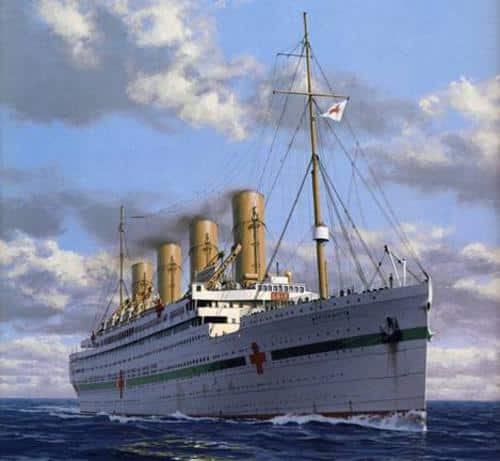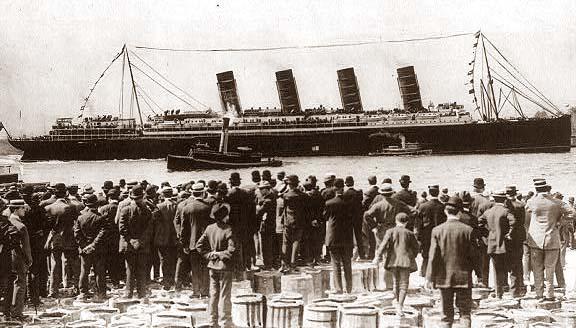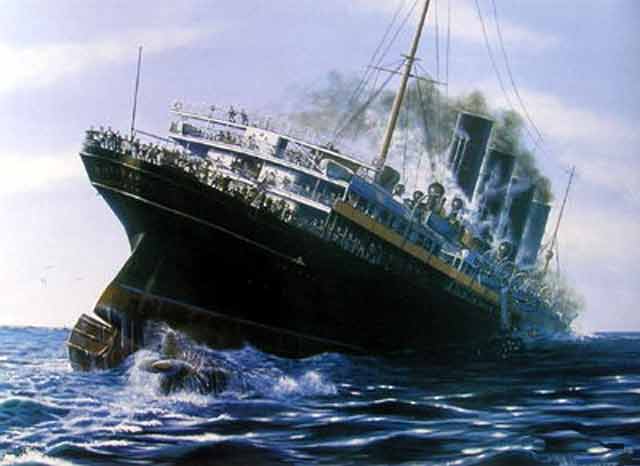Ship That Made History: RMS Lusitania
The name of the vessel Lusitania is one that sparks off immediate recognition. At the start of the World War I, when the Central and Allied forces were battling it out and the United States remained an inert presence, the destruction of this vessel gave way to the American entry into the war, thus changing the future of the world for many years to come.
Ship Lusitania
A British vessel, ship Lusitania was unlike any other vessel of her era. Built at the John Brown & Co. in Scotland, the ship’s owner and operator was the Cunard Shipping Company. Sister vessel of the Mauretania, the Lusitania boasted of splendid and state-of-the-art accommodation features and vessel specifications.
As a part of the vessel’s financial investment, a deal was made between the ships’ owner and the government of Britain. As per the terms of the deal, the government would provide the necessary funds required to construct the vessel on the condition that it would be customized to suit the British navy’s requirements and could be used as a naval ship as and when the situation arose.
In accordance with these terms, the ship was built so as to offer additional speed to counter any attacks from enemy naval prowess. The vessel’s specifications can be further elaborated as follows:
- The Lusitania measured 787 feet lengthwise and 87 feet beam wise with a draught over 33 feet
- The ship offered a speed of 25 knots
- With a gross tonnage of over 30,000 tonnes, the ship had a displacement of around 44,000 tonnes
Launched in the year 1906, the ship Lusitania thrust the British shipbuilding industry to the foremost position, which was held by the nation for more than two decades, post which German vessels overtook the British vessels in terms of navigation superiority.
World War I & the Sinking of Lusitania
The Lusitania was used to transport both passengers and commodities between the United States and Britain through the Atlantic Ocean. Between her first voyage in the year 1907 and her last in 1915, the vessel had carried out over 200 voyages, her last voyage being her 202nd.
On account of the First World War, alerts had been sounded to all ships entering the British waters to be cautious and careful about the German submarines and follow certain protocols to avoid being a target. These protocols involved the vessels taking a veering route rather than taking a steady course and cruising at exceptionally high speeds so as to avoid being spotted as a target.
On the day the ship sinking accident occurred, the weather was extremely foggy which forced the captain William Turner to proceed slowly through the waters on a steady course. The German submarine U-20 however was able to pinpoint the vessel as a target and shot a torpedo at the side of the ship. The repercussion caused because of the explosion of this torpedo caused yet another explosion leading to the sinking of Lusitania. What caused the resultant explosion however is still doubtful.
Unfortunately for the passengers of the vessel, the lifeboats (48 in all) were not able to be deployed properly because of the designing of the vessel was such that it required the attached anchors to be removed before the boats were launched. This lapse in the vessel construction caused the death of 1,198 passengers of the ship which included 128 Americans.
Conclusion
The sinking of Lusitania caused a lot of outrage and furore in the United States. This incident is also believed to be the actual catalyst of the First World War. But whether a catalyst or not, the deaths of the passengers aboard the ship could have been averted. If that would have been the case, then it could have also been possible that the First World War would have taken a different course altogether.
Do you have info to share with us ? Suggest a correction
Subscribe To Our Newsletters
By subscribing, you agree to our Privacy Policy and may receive occasional deal communications; you can unsubscribe anytime.







Hello my name is kenzo I have a great lego rms Lusitania I build it hard
First picture is of the HMHS Britannic. Another great ship with an unfortunate fate